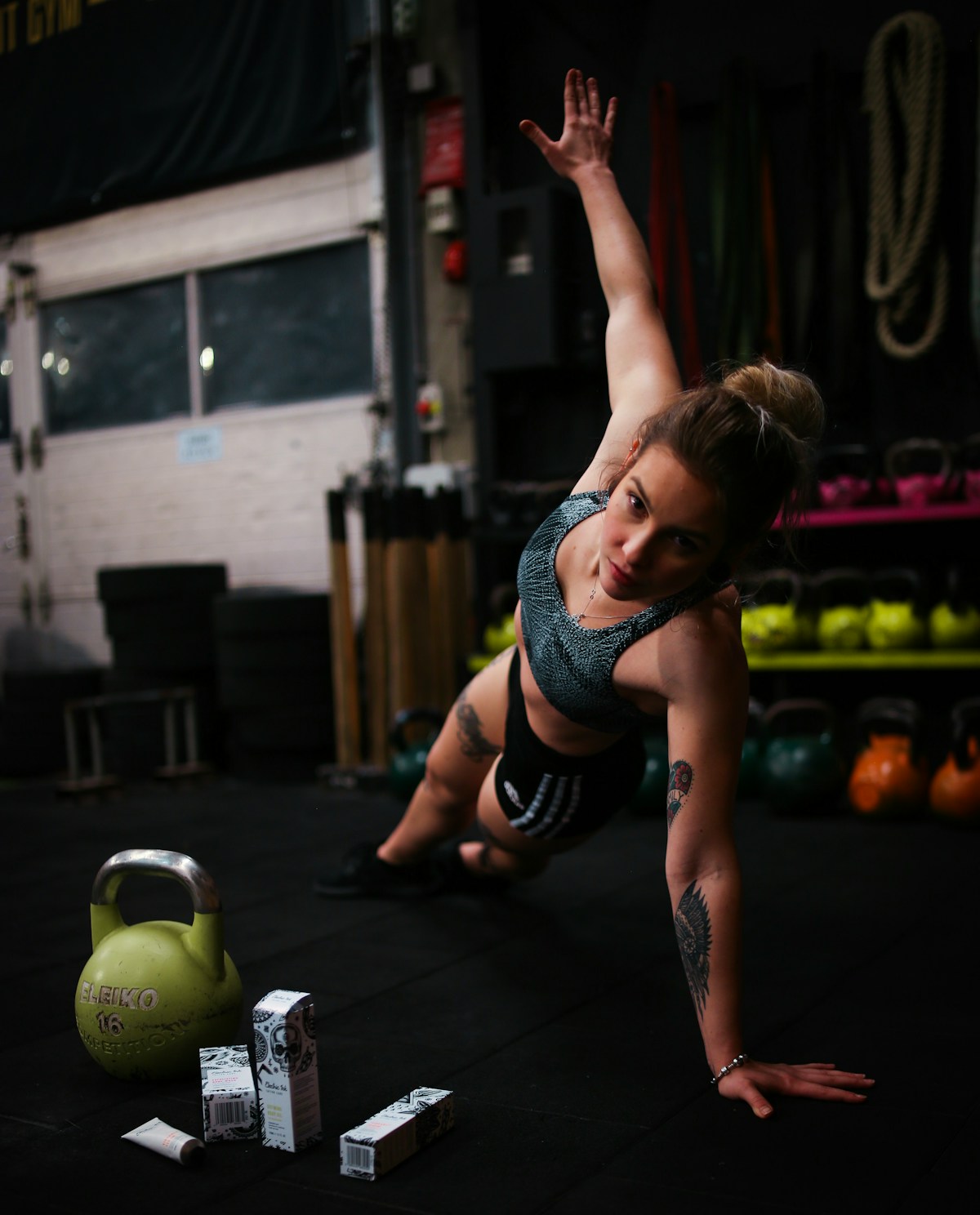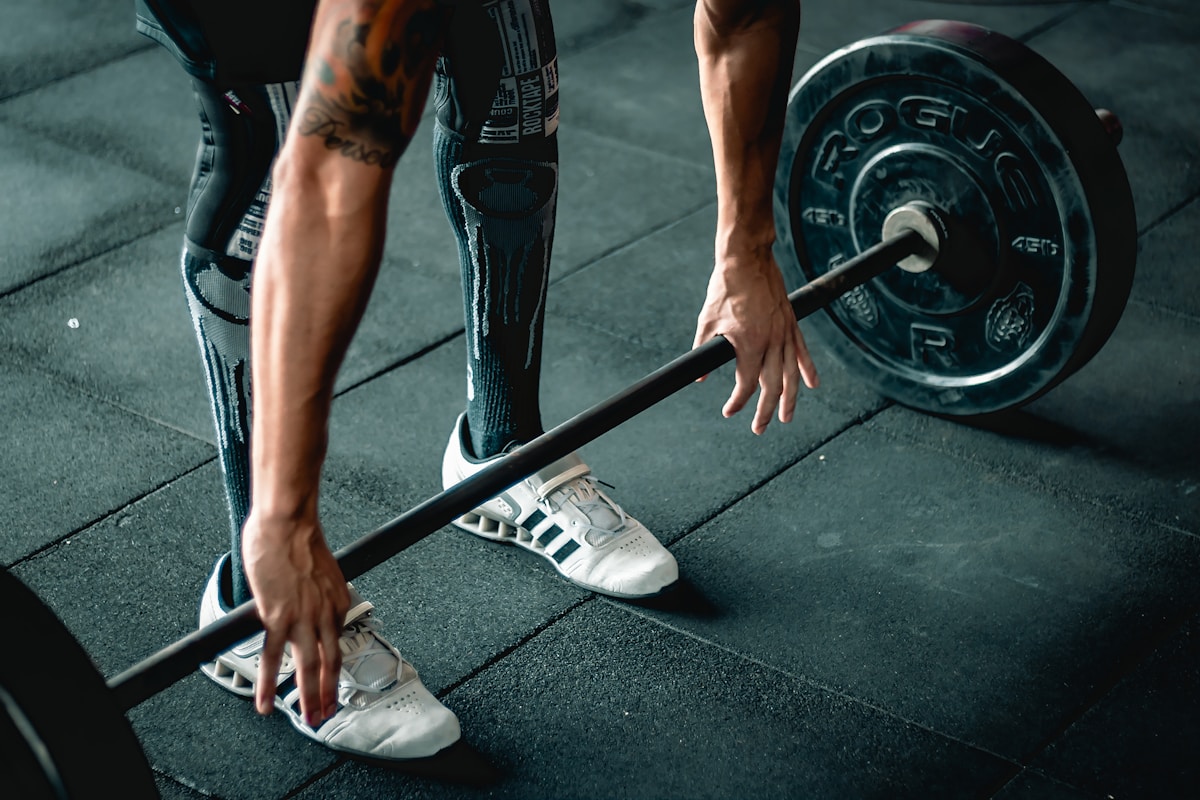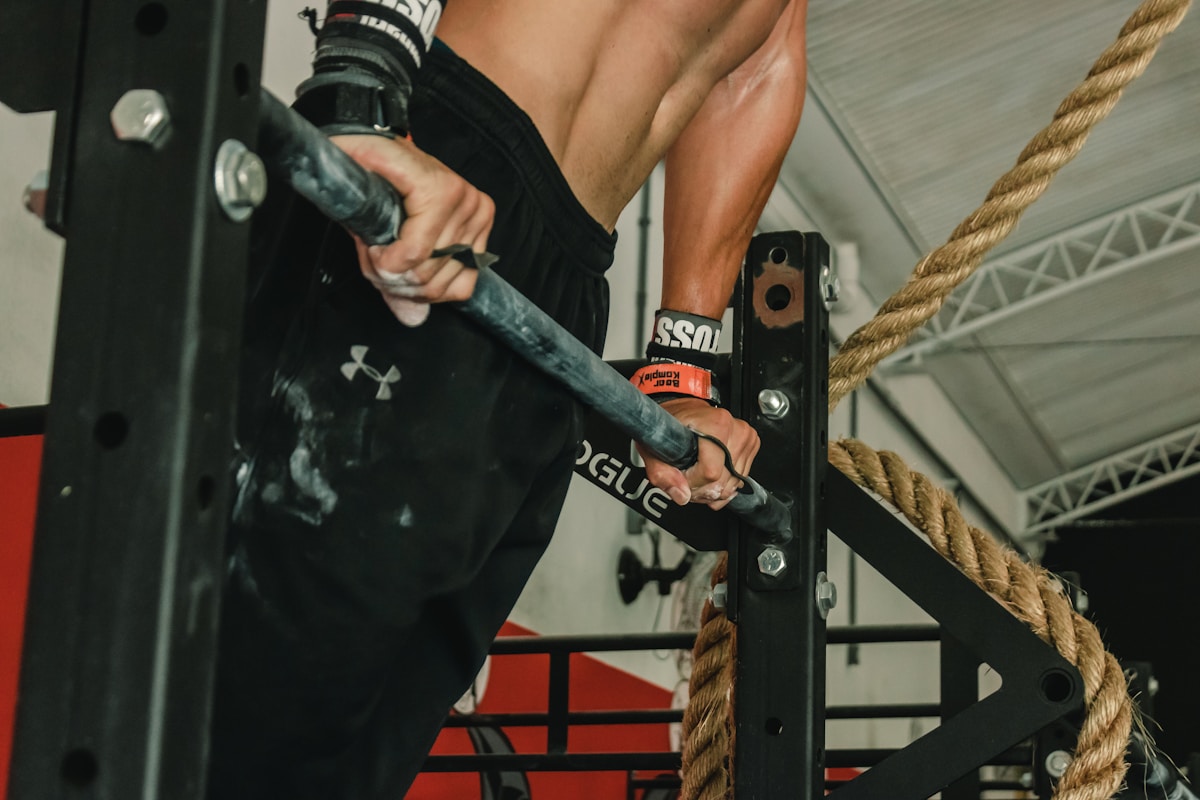How to Structure an Effective HIIT Workout for Maximum Results
Understanding HIIT: The Science Behind High-Intensity Interval Training
Understanding HIIT: The Science Behind High-Intensity Interval Training
High-Intensity Interval Training (HIIT) has gained significant popularity in the fitness world due to its time-efficient and effective nature. But what exactly is HIIT, and why is it so powerful?
At its core, HIIT is a training method that alternates short, intense bursts of exercise with brief recovery periods. This approach pushes your body to its limits, challenging both your cardiovascular and muscular systems. During the high-intensity intervals, you engage in exercises that elevate your heart rate and require maximum effort. The recovery periods allow for a brief rest to lower your heart rate before the next intense interval.
The science behind HIIT lies in its ability to stimulate both aerobic and anaerobic energy systems. The intense intervals push your body to rely on stored energy and engage anaerobic metabolism, which builds strength and power. The recovery periods, on the other hand, allow for the replenishment of oxygen and glycogen stores, improving aerobic capacity and endurance.
Research has shown that HIIT offers numerous benefits. It enhances cardiovascular fitness, increases fat burning, improves insulin sensitivity, and boosts overall metabolic rate. Additionally, HIIT has been found to be highly effective in reducing body fat, especially abdominal fat.
Understanding the science behind HIIT empowers you to structure your workouts more effectively and make the most out of this training method. By incorporating HIIT into your fitness routine, you can achieve maximum results in a shorter time frame, making it an ideal option for individuals with limited time for exercise.
Designing Your HIIT Workout: Key Elements and Considerations
Designing Your HIIT Workout: Key Elements and Considerations
When it comes to designing an effective HIIT (High-Intensity Interval Training) workout, there are several key elements and considerations to keep in mind. By understanding these factors, you can create a workout that maximizes results and helps you reach your fitness goals.
- Exercise Selection: Choose exercises that target multiple muscle groups and involve compound movements. This allows for a more efficient and effective workout. Incorporate exercises such as burpees, squats, push-ups, and mountain climbers.
- Work-to-Rest Ratio: Determine the appropriate work-to-rest ratio for your workout. This refers to the duration of the high-intensity interval compared to the recovery period. A common ratio is 1:1, where the work and rest intervals are equal in length. Experiment with different ratios to find what works best for you.
- Intensity Levels: Push yourself during the high-intensity intervals, aiming for near-maximum effort. This is where you challenge your body and stimulate adaptations. Be mindful of your fitness level and gradually increase the intensity as you become more comfortable with HIIT.
- Duration and Frequency: Consider the total duration of your HIIT workout and the frequency of your sessions. HIIT workouts are typically shorter in duration, ranging from 10 to 30 minutes. Aim to incorporate HIIT sessions into your routine 2 to 3 times per week, allowing for adequate recovery.
- Warm-up and Cool-down: Prioritize a proper warm-up and cool-down to prepare your body for the intense workout and promote recovery. Include dynamic stretches, mobility exercises, and a gradual increase in intensity during the warm-up. In the cool-down, focus on static stretches and gentle movements to aid in the recovery process.
By carefully considering these key elements and factors, you can design a well-rounded and effective HIIT workout that challenges your body, maximizes results, and helps you achieve your fitness goals.
HIIT Workout Structure: The Perfect Balance of Work and Rest
HIIT Workout Structure: The Perfect Balance of Work and Rest
The structure of a HIIT (High-Intensity Interval Training) workout is vital in achieving optimal results. It’s all about finding the perfect balance between work and rest intervals to challenge your body and stimulate the desired physiological adaptations. Here’s how to structure your HIIT workout effectively:
- Warm-up: Begin with a dynamic warm-up that targets the muscles you’ll be using during the workout. This helps increase blood flow, raise your body temperature, and prepare your joints and muscles for the upcoming intensity.
- Work Interval: The work interval is the high-intensity phase of the workout. Push yourself to near-maximum effort, performing exercises that elevate your heart rate and engage multiple muscle groups. Maintain proper form and technique throughout each exercise.
- Rest Interval: The rest interval is crucial for recovery and allows your heart rate to decrease before the next work interval. Use this time to actively rest, keeping your body moving at a slower pace to prevent stiffness and promote circulation.
- Work-to-Rest Ratio: Determine the work-to-rest ratio that suits your fitness level and goals. This ratio determines the duration of your work and rest intervals. A common ratio is 1:1, where the work and rest intervals are equal in length. Experiment with different ratios to find the right intensity and challenge for you.
- Repetitions and Sets: Structure your HIIT workout by completing a specific number of repetitions for each exercise during the work interval. Aim for a challenging but achievable number of repetitions that allows you to maintain proper form throughout the entire set. Repeat these sets for the desired number of rounds, gradually increasing the intensity as you progress.
- Cool-down: Conclude your HIIT workout with a proper cool-down, which includes light aerobic exercise and static stretching. This helps lower your heart rate, prevent muscle soreness, and aid in the recovery process.
By structuring your HIIT workout with the perfect balance of work and rest intervals, you can effectively challenge your body, improve cardiovascular fitness, and maximize the benefits of this training method. Keep in mind that the structure can be adjusted based on your fitness level and goals, allowing for progression and continuous improvement.
Choosing Exercises for Maximum Impact: Targeting Different Muscle Groups
Choosing Exercises for Maximum Impact: Targeting Different Muscle Groups
When designing a HIIT (High-Intensity Interval Training) workout, it’s essential to choose exercises that target different muscle groups to maximize the impact and effectiveness of your training. By incorporating a variety of exercises, you engage multiple muscle groups, stimulate more muscle fibers, and achieve a well-rounded workout. Here’s how to choose exercises for maximum impact:
- Compound Movements: Focus on compound exercises that work multiple muscle groups simultaneously. These exercises recruit more muscles, leading to greater energy expenditure and overall strength gains. Examples include squats, lunges, push-ups, burpees, and kettlebell swings.
- Upper Body Exercises: Include exercises that target the upper body, such as push-ups, pull-ups, shoulder presses, and tricep dips. These exercises engage the chest, back, shoulders, and arms, promoting strength and muscular development in the upper body.
- Lower Body Exercises: Incorporate lower body exercises like squats, lunges, deadlifts, and box jumps. These movements target the glutes, quadriceps, hamstrings, and calves, improving lower body strength, power, and overall stability.
- Core Exercises: Integrate exercises that challenge the core muscles, such as planks, mountain climbers, Russian twists, and bicycle crunches. A strong core enhances stability, improves posture, and supports overall functional movement.
- Cardiovascular Exercises: Include exercises that elevate your heart rate and improve cardiovascular fitness. Examples include high knees, jumping jacks, mountain climbers, and skipping rope. These exercises boost endurance, burn calories, and enhance overall cardiovascular health.
By selecting a mix of compound movements, upper and lower body exercises, core exercises, and cardiovascular exercises, you ensure that your HIIT workout targets different muscle groups and delivers maximum impact. This approach promotes balanced muscular development, increases calorie burn, and boosts overall fitness. Remember to choose exercises that align with your fitness level and goals, gradually progressing as you become more comfortable and stronger.
Customizing Your HIIT Workout: Progressions, Modifications, and Variations
Customizing Your HIIT Workout: Progressions, Modifications, and Variations
One of the great advantages of HIIT (High-Intensity Interval Training) is its flexibility, allowing you to customize your workout to suit your fitness level, goals, and preferences. By incorporating progressions, modifications, and variations, you can tailor your HIIT routine for maximum effectiveness and enjoyment.
Progressions: As you become more comfortable with HIIT, consider incorporating progressions to challenge your body further. Increase the duration or intensity of the work intervals, reduce the rest intervals, or add additional rounds. Gradually pushing your limits ensures continued progress and prevents plateauing.
Modifications: HIIT workouts can be modified to accommodate different fitness levels or physical limitations. For beginners, decrease the intensity or duration of the work intervals, increase rest intervals, or choose low-impact exercises. If you have specific limitations or injuries, modify exercises to suit your needs while still maintaining an elevated heart rate.
Variations: Keep your HIIT workouts exciting and engaging by introducing variations. This includes changing the exercises, altering the order of the exercises, or incorporating different equipment. Try using dumbbells, resistance bands, or kettlebells to add variety and challenge your muscles in new ways.
Interval Types: Explore different interval types within your HIIT workouts. Consider incorporating Tabata intervals (20 seconds of work, 10 seconds of rest), pyramid intervals (gradually increasing and then decreasing intensity), or ladder intervals (increasing the number of repetitions each round). This adds a new dimension to your training, keeping your body and mind stimulated.
Remember, the key to customizing your HIIT workout is to listen to your body and adjust accordingly. Find the right balance between intensity and recovery, challenge yourself within your capabilities, and continue to progress as you become fitter and stronger. By customizing your HIIT routine, you can create a workout that is tailored to your needs, enjoyable to perform, and effective in achieving your fitness goals.
Conclusion
By mastering the art of structuring an effective HIIT workout, you can elevate your fitness journey and achieve maximum results. Understand the science behind HIIT, consider key elements, and design workouts that challenge your body in a balanced manner. Choose exercises that target different muscle groups, strike the right balance between work and rest intervals, and customize your workouts to suit your needs. With proper structure and customization, you can maximize the effectiveness of your HIIT training, boost cardiovascular fitness, increase strength, and burn calories efficiently. Get ready to unleash the full potential of your HIIT workouts and experience transformative fitness gains.
Choosing Exercises for Maximum Impact: Targeting Different Muscle Groups
When designing a HIIT (High-Intensity Interval Training) workout, it’s essential to choose exercises that target different muscle groups to maximize the impact and effectiveness of your training. By incorporating a variety of exercises, you engage multiple muscle groups, stimulate more muscle fibers, and achieve a well-rounded workout. Here’s how to choose exercises for maximum impact:
- Compound Movements: Focus on compound exercises that work multiple muscle groups simultaneously. These exercises recruit more muscles, leading to greater energy expenditure and overall strength gains. Examples include squats, lunges, push-ups, burpees, and kettlebell swings.
- Upper Body Exercises: Include exercises that target the upper body, such as push-ups, pull-ups, shoulder presses, and tricep dips. These exercises engage the chest, back, shoulders, and arms, promoting strength and muscular development in the upper body.
- Lower Body Exercises: Incorporate lower body exercises like squats, lunges, deadlifts, and box jumps. These movements target the glutes, quadriceps, hamstrings, and calves, improving lower body strength, power, and overall stability.
- Core Exercises: Integrate exercises that challenge the core muscles, such as planks, mountain climbers, Russian twists, and bicycle crunches. A strong core enhances stability, improves posture, and supports overall functional movement.
- Cardiovascular Exercises: Include exercises that elevate your heart rate and improve cardiovascular fitness. Examples include high knees, jumping jacks, mountain climbers, and skipping rope. These exercises boost endurance, burn calories, and enhance overall cardiovascular health.
By selecting a mix of compound movements, upper and lower body exercises, core exercises, and cardiovascular exercises, you ensure that your HIIT workout targets different muscle groups and delivers maximum impact. This approach promotes balanced muscular development, increases calorie burn, and boosts overall fitness. Remember to choose exercises that align with your fitness level and goals, gradually progressing as you become more comfortable and stronger.



